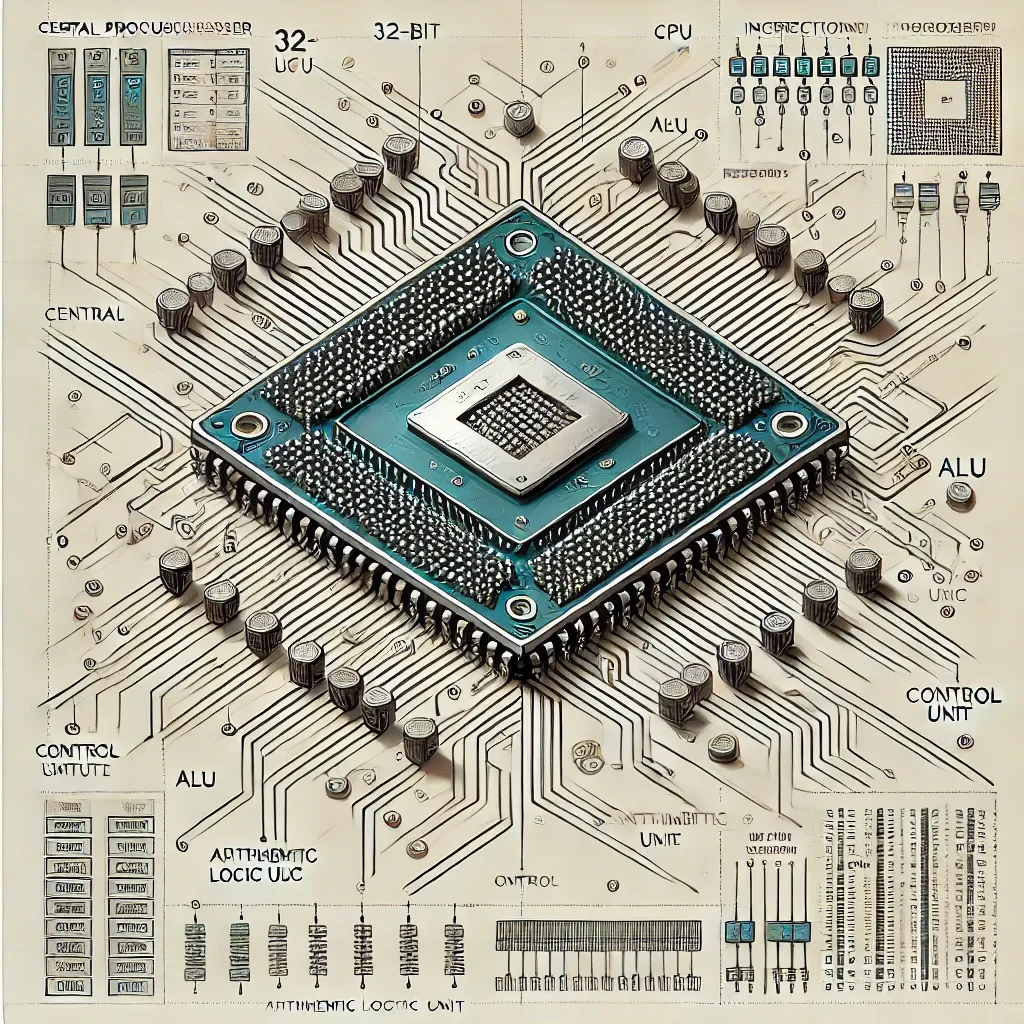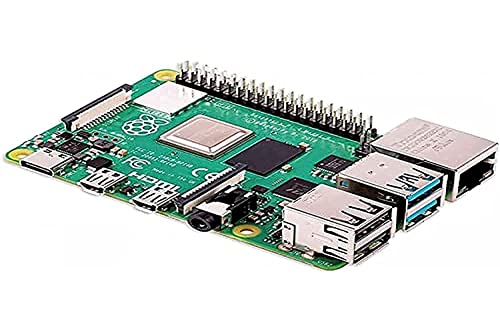 The MIPS (MIPS Instruction Set) architecture is a RISC (Reduced Instruction Set Computing) processor designed by John Hennessy and David Patterson in the 1980s. It is one of the most widely used instruction set architectures in the world, with applications ranging from embedded systems to high-performance computing. The significance of MIPS lies in its simplicity, efficiency, and scalability, making it an ideal choice for a wide range of applications.
The MIPS (MIPS Instruction Set) architecture is a RISC (Reduced Instruction Set Computing) processor designed by John Hennessy and David Patterson in the 1980s. It is one of the most widely used instruction set architectures in the world, with applications ranging from embedded systems to high-performance computing. The significance of MIPS lies in its simplicity, efficiency, and scalability, making it an ideal choice for a wide range of applications.
Understanding instruction sets is crucial in computer architecture, as they form the foundation of all software development. Instruction sets define the binary code that a processor can execute, and mastering them allows programmers to write efficient, optimized, and portable code. In this article, we will delve into the MIPS instruction set, exploring its history, key features, and examples.
We will use SPIM (MIPS Processor Simulator) as a tool for experimentation and learning. SPIM is a software emulator that simulates the behavior of a MIPS processor, allowing users to assemble, link, and execute MIPS code in a controlled environment. With SPIM, we can explore the inner workings of the MIPS instruction set and gain hands-on experience with programming in assembly language. SPIM has been around for a long time; twenty-four years ago, I used SPIM in a Computer Architecture course at the University of Minnesota Duluth. It is a solid piece of software. You might also want to take a look at WeMIPS, I have an setup this instance of a very nice MIPS emulator written in JavaScript.
In traditional Complex Instruction Set Computing (CISC) architectures, instructions could take multiple clock cycles to execute. This was because CISC instructions often performed complex operations that involved multiple steps, such as loading data from memory, performing arithmetic calculations, and storing results back into memory. For example, a single instruction might load two values from memory, add them together, and store the result in a register.
In contrast, Reduced Instruction Set Computing (RISC) architectures like MIPS were designed to execute instructions in just one clock cycle. This was achieved by breaking down complex operations into simpler, more fundamental instructions that could be executed quickly and efficiently. For example, instead of having a single instruction that loads two values from memory, adds them together, and stores the result in a register, a RISC architecture would have separate instructions for loading data from memory, performing arithmetic calculations, and storing results in registers.
This approach had several benefits. First, it allowed for faster execution times, since each instruction could be executed in just one clock cycle. Second, it reduced the complexity of the processor's control logic, making it easier to design and manufacture. Finally, it made it possible to implement pipelining techniques, where multiple instructions are fetched and decoded simultaneously, allowing for even higher performance.
The first MIPS processor, known as R2000, was released in 1984. It featured a 32-bit address space and a relatively simple instruction set with only about 100 instructions. Over the years, the MIPS instruction set has evolved through several revisions, including the R3000 (1988), R4000 (1991), and R5000 (1996).
MIPS had a significant influence on the development of other RISC architectures, such as SPARC (Scalable Processor Architecture) from Sun Microsystems and PA-RISC from Hewlett-Packard. These architectures borrowed ideas from MIPS, including the use of load/store instructions, delayed branches, and register windows.
Throughout its evolution, MIPS has remained a popular choice for embedded systems, networking devices, and other applications where low power consumption and high performance are critical. Today, MIPS is still used in many products, ranging from set-top boxes to smartphones, and continues to be an important part of the computer architecture landscape.
A MIPS instruction consists of 32 bits, divided into several fields that specify the operation, operands, and other relevant information. The basic structure of a MIPS instruction includes:
- Opcode (6 bits): specifies the type of operation to be performed
- Rs and Rt (5 bits each): specify the source registers for most instructions
- Rd (5 bits): specifies the destination register for most instructions
- Immediate operand (16 bits): used for load/store operations and some arithmetic/logical operations
MIPS instructions can be broadly classified into several categories:
- Arithmetic and logical operations: perform calculations on integer values, such as addition, subtraction, multiplication, and division. Examples include
add,sub,mul, anddiv. - Load/store operations: transfer data between memory locations and registers. Examples include
lw(load word),sw(store word), andlh(load halfword). - Control flow operations: manipulate the program counter to change the flow of execution. Examples include
j(jump) andjr(jump register). - Branching and jumping instructions: test conditions and transfer control to a different location in the code if the condition is true. Examples include
beq(branch if equal),bne(branch if not equal), andblez(branch if less than or equal to zero).
One important register in MIPS is the register-zero ($0). This register always contains the value 0, and any attempt to write a non-zero value to it results in no operation being performed. The $0 register serves several purposes:
- It provides a convenient way to specify a zero operand for arithmetic and logical operations.
- It allows for efficient implementation of certain instructions, such as
addi(add immediate), which adds an immediate value to a register without requiring a separate register to hold the result. - It simplifies the design of MIPS processors by reducing the number of registers that need to be implemented.
SPIM (MIPS Processor Simulator) is a free, open-source emulator for the MIPS architecture. It allows you to run and debug MIPS assembly language programs on your computer, without needing actual MIPS hardware. This makes it an excellent tool for learning about the MIPS instruction set and experimenting with different programming techniques.
To install SPIM on your computer, follow these steps:
- Visit the official SPIM website (https://spimsimulator.sourceforge.net/) and download the correct version for your operating system (Windows, macOS, or Linux). For FreeBSD, SPIM is available through Ports.
- Follow the installation instructions provided on the website.
- Once installed, you can run SPIM from the command line by typing
spimfollowed by the name of the program file you want to execute.
Let's try assembling and executing a simple MIPS program using SPIM. Create a new text file called hello.asm with the following contents:
.data hello: .asciiz "Hello, world!" .text main: la $a0, hello # load address of string into register $a0 li $v0, 4 # set system call code for printing a string syscall # execute the system call j main # loop indefinitely
Assemble and execute this program using SPIM with the following command:
spim -assemble hello.asm
This will assemble the program and display the output "Hello, world!" on your screen.
To debug and step through code using SPIM, use the -debug option followed by the name of the program file. This will open up a debugging window that allows you to step through each instruction one at a time, examine registers and memory, and set breakpoints.
For example:
spim -debug hello.asm
This will start the debugger and allow you to step through each instruction in your program. You can use commands like step, next, and continue to control the execution of your program, and print to examine registers and memory values.
SPIM is a powerful tool for experimenting with MIPS assembly language programming. It allows you to assemble and execute simple programs, debug and step through code, and examine registers and memory. With SPIM, you can explore the world of MIPS programming without needing actual hardware!
In this article, we have explored the fundamentals of the MIPS instruction set, a widely used RISC architecture that plays a crucial role in computer programming and computer architecture. We began by delving into the history of MIPS, tracing its development from the early days to its current status as a popular choice for embedded systems and high-performance computing. Next, we examined the basic structure of a MIPS instruction and discussed the different types of instructions, including arithmetic, load/store, control flow, and branching operations.
Understanding the MIPS instruction set is essential for anyone interested in computer programming, architecture, or engineering. By grasping the concepts outlined in this article, readers will gain a deeper appreciation for the inner workings of computers and be better equipped to design and develop efficient software and hardware systems.
For those who wish to learn more about SPIM and the MIPS instruction set, we recommend exploring the SPIM website, which provides comprehensive documentation, tutorials, and examples. Additionally, online courses and textbooks on computer architecture and assembly language programming can offer further insight into the world of MIPS and beyond.
